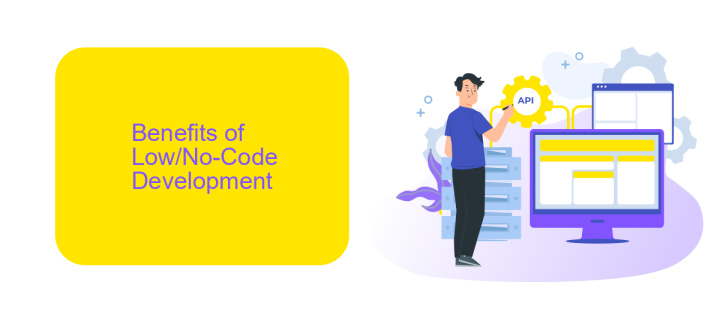Low/No-Code Approach
The Low/No-Code approach is revolutionizing the way businesses develop software by enabling non-technical users to create applications with minimal or no coding skills. This methodology accelerates the development process, reduces costs, and empowers a broader range of individuals to contribute to digital innovation. In this article, we explore the benefits, challenges, and future prospects of Low/No-Code platforms.
Introduction
The Low/No-Code approach is revolutionizing the way businesses develop and deploy software solutions. By enabling users without extensive programming knowledge to create functional applications, this methodology is democratizing software development and accelerating digital transformation.
- Empowers non-technical users to build applications
- Reduces development time and costs
- Facilitates rapid prototyping and iteration
- Enhances collaboration between IT and business teams
One of the critical aspects of this approach is the integration of various services and tools. Platforms like ApiX-Drive play a vital role by providing seamless integration capabilities, allowing users to connect different applications and automate workflows without writing a single line of code. This not only streamlines operations but also enhances the overall efficiency of business processes.
Benefits of Low/No-Code Development

Low/No-Code development offers numerous benefits, making it a game-changer for businesses and developers alike. One of the most significant advantages is the speed of development. By utilizing visual interfaces and pre-built components, projects that once took months can now be completed in weeks or even days. This accelerated timeline allows businesses to respond swiftly to market changes and customer demands, ensuring they stay competitive.
Another major benefit is the accessibility it provides. Low/No-Code platforms empower non-technical users to create and manage applications without needing extensive programming knowledge. This democratization of development fosters innovation from all departments, not just IT. Additionally, integrating various services becomes a breeze with tools like ApiX-Drive, which simplifies the process of connecting disparate systems. This ease of integration ensures that businesses can maintain seamless workflows and data consistency across all their applications.
Use Cases for Low/No-Code Development

Low/No-Code development is revolutionizing how businesses approach software creation, enabling non-technical users to build applications with minimal coding knowledge. This approach democratizes the development process, making it accessible to a broader audience and accelerating project timelines.
Key use cases for Low/No-Code development include:
- Internal Tools: Companies can quickly develop internal tools for project management, HR, and finance without needing extensive IT resources.
- Prototyping: Rapidly create prototypes to validate ideas and gather feedback before committing to full-scale development.
- Workflow Automation: Automate repetitive tasks and streamline business processes, improving efficiency and reducing human error.
- Integration: Services like ApiX-Drive enable seamless integration of various applications, allowing businesses to connect and automate workflows without deep technical expertise.
- Customer-Facing Applications: Build and deploy customer portals, mobile apps, and websites to enhance customer engagement and service delivery.
By leveraging Low/No-Code platforms, organizations can reduce development costs, shorten time-to-market, and empower employees to contribute to digital transformation initiatives. This approach is particularly beneficial for small and medium-sized enterprises (SMEs) that may lack extensive IT resources but still need to innovate and stay competitive.
Challenges of Low/No-Code Development

Low/No-Code development has gained popularity for its ability to enable rapid application development with minimal coding skills. However, this approach is not without its challenges. One significant issue is the limitation in customization. While these platforms offer a variety of pre-built templates and modules, they may not always meet specific business needs, leading to potential constraints in functionality.
Another challenge is the integration with existing systems and third-party services. Ensuring seamless data flow and communication between different platforms can be complex. For instance, while tools like ApiX-Drive can facilitate integrations, there can still be limitations in terms of supported applications and the depth of integration possible.
- Limited customization options
- Complexity in integrating with existing systems
- Potential performance issues with large-scale applications
- Security concerns due to reliance on third-party platforms
Despite these challenges, Low/No-Code platforms continue to evolve, offering more robust features and better integration capabilities. By carefully evaluating the needs of the project and the capabilities of the platform, businesses can effectively leverage Low/No-Code development to achieve their goals.
- Automate the work of an online store or landing
- Empower through integration
- Don't spend money on programmers and integrators
- Save time by automating routine tasks
Conclusion
The Low/No-Code approach is revolutionizing the way businesses develop and deploy applications by significantly reducing the need for traditional coding skills. This paradigm shift empowers a broader range of individuals, including those without extensive technical backgrounds, to create functional and scalable solutions. As a result, organizations can achieve faster time-to-market and greater flexibility in responding to evolving business needs.
Furthermore, the ability to easily integrate various services and automate workflows is a cornerstone of the Low/No-Code movement. Tools like ApiX-Drive facilitate these integrations by providing a user-friendly interface to connect different applications without writing a single line of code. This not only streamlines operations but also enhances productivity and innovation within teams. In conclusion, embracing Low/No-Code technologies can lead to significant cost savings, increased agility, and a democratization of the software development process.
FAQ
What is a Low/No-Code approach?
Who can benefit from using Low/No-Code platforms?
Can Low/No-Code platforms handle complex integrations?
How secure are Low/No-Code platforms?
What are the limitations of using Low/No-Code platforms?
Apix-Drive will help optimize business processes, save you from a lot of routine tasks and unnecessary costs for automation, attracting additional specialists. Try setting up a free test connection with ApiX-Drive and see for yourself. Now you have to think about where to invest the freed time and money!


